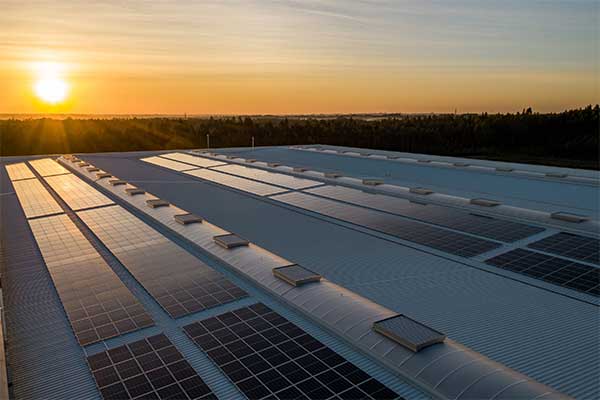- Researchers at Texas A&M University are studying the viability of solar photovoltaic (PV) grid-tied systems on rooftops.
- The researchers found the overall performance results were a technically, economically and environmentally feasible solution for electricity generation.
- They say it could play a significant role in the future energy mix of Texas.
Scientists are continuously looking for alternatives to fossil fuel-based power plants to diminish the adverse effects of fossil energy sources on the environment and build reliability. Researchers at Texas A&M University are studying the viability of solar photovoltaic (PV) grid-tied systems on rooftops to fill that need.
Fadhil Al-Aboosi, a researcher with the Texas A&M Engineering Experiment Station’s Gas and Fuel Research Center, is leading a team studying the adoption of solar PV systems on building rooftops in countries that have a good solar energy potential, even if they are oil or gas producers. PV systems are composed of one or more solar panels combined with an inverter and other electrical and mechanical hardware that use energy from the sun to generate electricity.
“We want to mitigate the negative impact of fossil energy sources on the environment, to avoid using lands that can add more cost and may be used for other purposes, such as agricultural and urban activities,” Al-Aboosi said. “This will address the energy and environmental challenges of the rapid growth of the building sector.”
Al-Aboosi said the prospects of the implementation of a PV system on building rooftops in Texas was studied theoretically for the first time to overcome the lack of performance behavior data of this technology, specifically for the selected location.
“The importance and accuracy of results comparing other previous research that has been carried out in the same direction is obtained from the comprehensive analysis of the system performance,” Al-Aboosi said. “We considered technical, economic and environmental criteria, solar irradiance intensity, two modes of single-axis tracking, the shadow effect and the PV cell temperature impact on system efficiency.”
The results of their study, “Preliminary Evaluation of a Rooftop Grid-Connected Photovoltaic System Installation under the Climatic Conditions of Texas,” are detailed in the journal Energies.
The researchers evaluated parameters of the proposed system, including energy output, array yield (the ratio of daily, monthly or yearly direct current energy output from a PV array), final yield, array and system losses, capacity factor, performance ratio, return on investment, payback period, Levelized cost of energy and carbon emissions.
According to the overall performance results of the PV system, which researchers propose to be installed on the eastern buildings of the Texas A&M campus, Al-Aboosi said the team found this to be a technically, economically and environmentally feasible solution for electricity generation and could play a significant role in the future energy mix of Texas.
“The result of the comparison for the proposed PV system with other PV systems located in different sites around the world showed that their performance does not only depend on solar radiation intensity, but the operational and climatic conditions should be considered for any site that is selected to install the PV system,” he said.
Al-Aboosi said it was important to look at all these aspects in order to make solar energy a more viable solution.
“The lack of research in this field, either published or implemented, environmental concerns and supporting variety in energy sources have sparked our curiosity to perform this study,” he said. “Furthermore, this study has been presented to make Texas A&M University and the Texas A&M Engineering Experiment Station a pioneer in this field as in other scientific fields. It is worth noting that this work is the first study that was done hypothetically in Texas based on theoretical analysis whereas all previous studies, which were used for comparison with this study, have been done based on experimental results at different locations worldwide.”
He said the results were truly impressive and will pave the way for substantial developments in using rooftop grid-tied PV systems.
“It can be used as a future vision, especially the economic analysis, for estimating the potential of investment incentives, subsidies and feed-in tariff (a policy mechanism designed to accelerate investment in renewable energy) to make implementing solar PV systems more attractive in Texas and around the world,” Al-Aboosi said. “In any case, the long-term performance of the rooftop grid-tied technologies in Texas requires further research, especially finding proper management strategies of flexible aggregating of distributed energy resources, from fossil fuels and renewable energy sources, into grid.”
—-
Publication Referenced in the Article:
Fadhil Y. Al-Aboosi et al, Preliminary Evaluation of a Rooftop Grid-Connected Photovoltaic System Installation under the Climatic Conditions of Texas (USA), Energies (2021). DOI: 10.3390/en14030586.











Comments